[ad_1]
Ever dreamt of wandering by way of the woods, gathering contemporary berries and mushrooms for a scrumptious and free meal? For a lot of, the thought of foraging evokes a way of self-reliance and connection to nature. Nonetheless, earlier than you seize your basket and head outside, it’s essential to grasp the authorized panorama surrounding foraging.
Foraging’s legality within the US is determined by location, land possession, and particular laws. Whereas some public lands permit restricted foraging with permits, others strictly prohibit it. Non-public property requires landowner permission to keep away from trespassing.
Within the following sections, we’ll delve into the complexities of foraging laws, discover the several types of land the place foraging may be permitted, and supply sensible ideas to make sure your foraging actions are authorized and sustainable.
The Authorized Panorama of Foraging in the US
The attract of foraging, its connection to an easier lifestyle, and the potential at no cost, contemporary meals have seen a major rise in recognition in recent times.
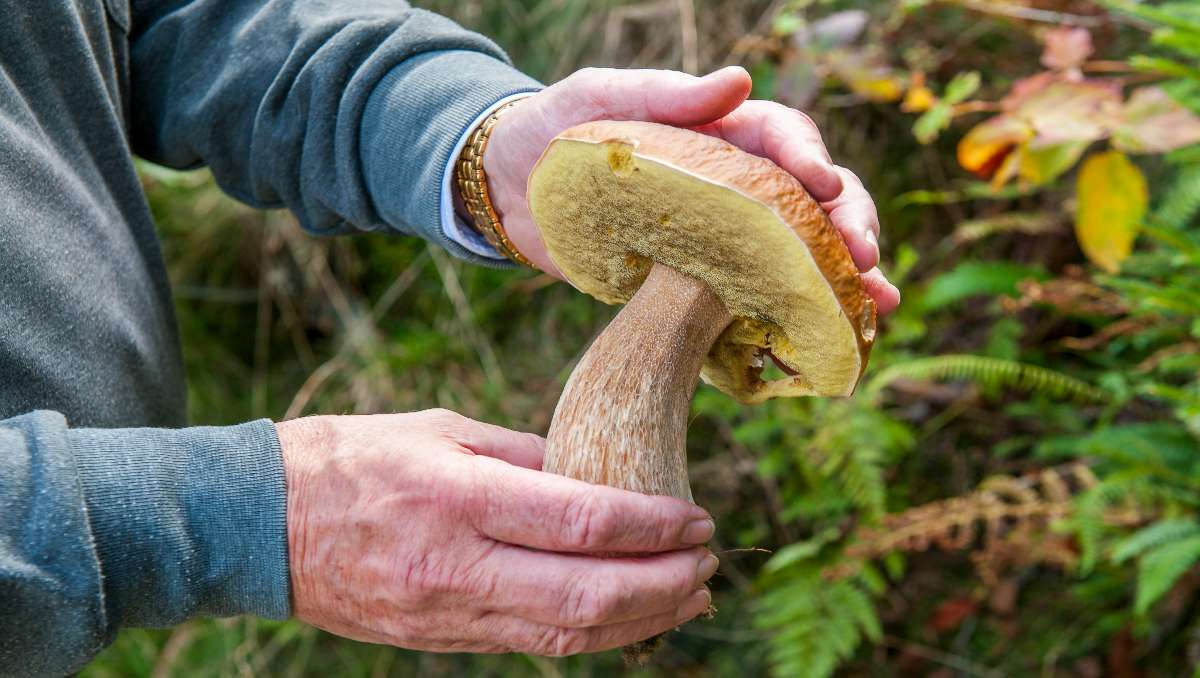

A 2023 research by the Nationwide Gardening Affiliation discovered that just about 20 million Individuals participated in some type of foraging exercise prior to now 12 months, with the observe turning into more and more widespread in city areas as nicely. This rising pattern, nevertheless, raises a important query: is foraging authorized?
The reply, sadly, isn’t a easy sure or no. In terms of foraging on public lands in the US, the authorized panorama is a fancy patchwork of federal laws, state and native legal guidelines, and even particular person park or land administration insurance policies.
Federal Laws
As a place to begin, it’s vital to grasp the overarching federal laws governing eradicating pure sources from public lands.
Title 36 of the Code of Federal Laws, particularly Half 261, explicitly prohibits the “removing of any pure product” from public lands “with out particular authorization.”
This consists of the whole lot from wildflowers and berries to firewood and rocks. The rationale behind this regulation lies in the necessity to defend the ecological stability and make sure the sustainability of those public lands for future generations.
State and Native Legal guidelines
Whereas Title 36 offers a foundational framework, the precise authorized framework for foraging turns into much more intricate on the state and native ranges. Every state has its personal set of laws and allowing programs that govern the gathering of untamed crops and mushrooms on public lands.
Particular person park administration businesses inside these lands, such because the Nationwide Park Service (NPS) or the Bureau of Land Administration (BLM), might have much more particular laws and allow necessities in place.
As an example, whereas the NPS usually prohibits the removing of crops and wildlife from nationwide parks, some parks might have designated areas the place berry selecting or mushroom foraging is allowed with a allow. Equally, sure nationwide forests managed by the BLM might permit for restricted private use foraging of particular plant species, requiring a allow or adhering to particular seasonal restrictions.
It’s essential to keep in mind that park superintendents usually maintain important discretion in figuring out the principles and laws surrounding foraging inside their jurisdiction. Which means that foraging laws range barely from park to park, even throughout the identical state or federal company.
The place is Foraging Allowed?
Now that we’ve explored the authorized complexities surrounding foraging, the following essential query is: the place are you able to really forage? Understanding the totally different land possession varieties and their related laws is paramount for accountable and authorized foraging.
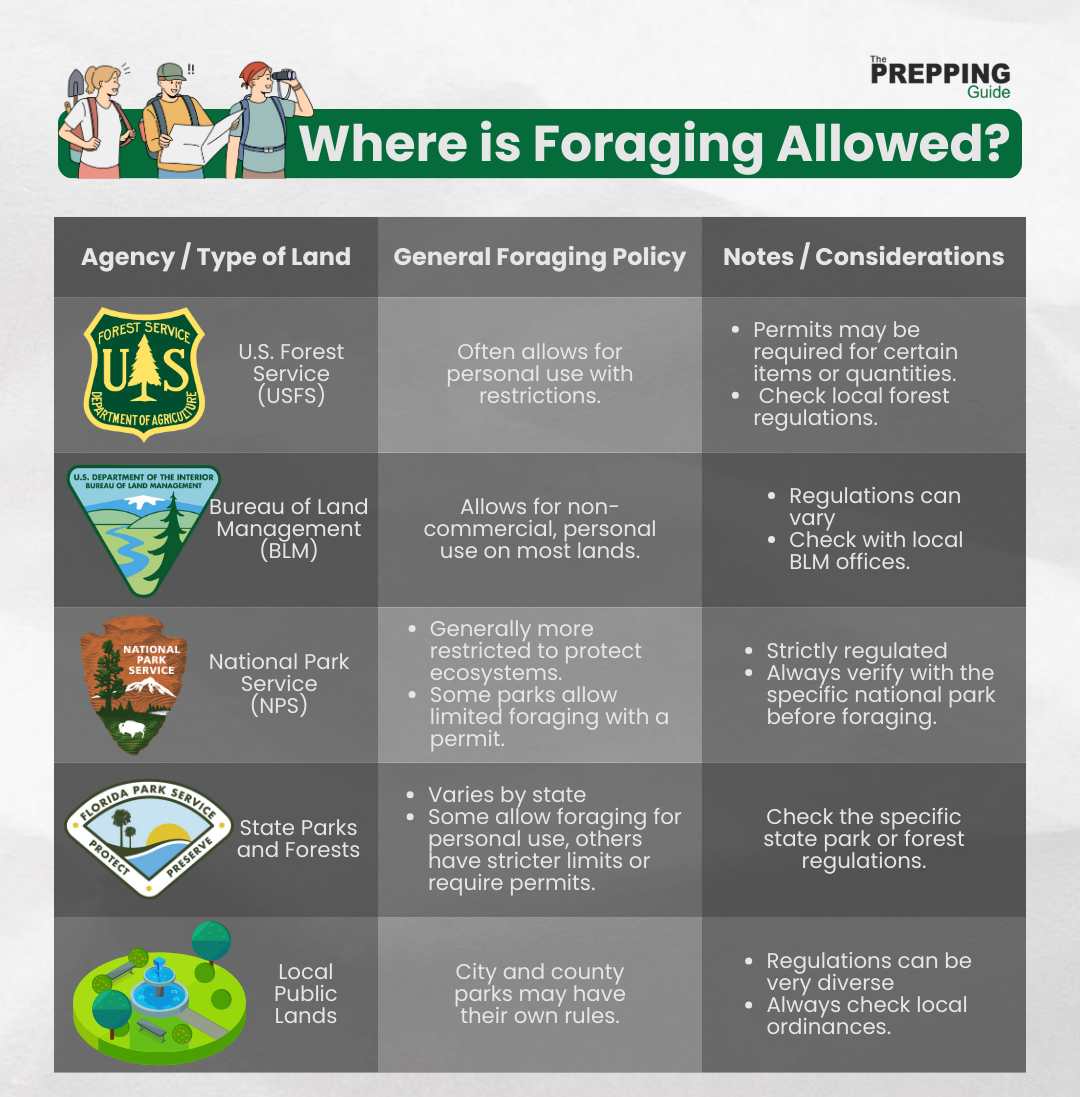

Public Land
Public lands, encompassing nationwide parks, state parks, forests, and wildlife administration areas, usually signify essentially the most accessible areas for potential foraging actions. Nonetheless, as we discovered earlier, foraging on public land shouldn’t be a blanket proper. Whereas some public lands might permit restricted foraging with permits or underneath particular tips, others strictly prohibit it.
The important thing lies in researching the precise laws and acquiring the mandatory permits for the general public land you plan to go to. This may be completed by visiting the web site of the managing company (e.g. Nationwide Park Service, Bureau of Land Administration) or contacting the park ranger station instantly.
Non-public Land
Whereas public lands might provide some foraging alternatives, it’s vital to keep in mind that personal property is strictly off-limits. No matter whether or not the land seems deserted or the precise crops and mushrooms seem plentiful, foraging on personal land with out the specific permission of the landowner is taken into account trespassing.
Even when taking a couple of berries or mushrooms won’t be thought of theft within the strictest authorized sense, it nonetheless violates the landowner’s property rights.
The results of trespassing can vary from being politely requested to go away the property to going through fines and even legal prices.
Due to this fact, it’s important to at all times search permission from the landowner earlier than foraging on any personal property. Accountable and respectful interplay with landowners is essential for fostering optimistic relationships and getting access to personal foraging alternatives sooner or later.
Foraging Pointers by Area
The US boasts various ecosystems, every harboring a novel number of edible crops and mushrooms. Whereas the legalities of foraging are paramount, understanding the regional variations in forageable species and seasonal concerns can elevate your expertise and guarantee sustainable practices.
Let’s delve into some key foraging alternatives and ideas by area:
Northeast
Foraging alternatives: Wild blueberries, raspberries, blackberries, fiddlehead ferns, chanterelle mushrooms, morel mushrooms (spring)
Seasonal ideas: Spring gives a bounty of fiddleheads and early morel mushrooms. Summer season brings forth blueberries, raspberries, and blackberries. Be conscious of strict laws and designated foraging areas in nationwide parks like Acadia Nationwide Park.
Southeast
Foraging alternatives: Mayapples (fruit in late spring), pawpaws (fruit in fall), wild garlic, chanterelle mushrooms, hen-of-the-woods mushrooms
Seasonal ideas: Spring gives wild garlic and early mushrooms. Summer season brings forth mayapples and plentiful greens. Fall is prime time for pawpaws and lots of different edible nuts. Concentrate on the potential presence of invasive lionfish in coastal areas, which will be toxic if consumed.
Midwest
Foraging alternatives: Dandelions (leaves and flowers), wild blackberries, elderberries (fruits in fall), morel mushrooms, puffball mushrooms
Seasonal ideas: Early spring is the time for dandelion greens and flowers. Summer season gives blackberries and elderflowers. Fall brings forth elderberries and varied mushrooms. Be conscious of agricultural practices and keep away from foraging close to conventionally sprayed fields.
West
Foraging alternatives: Prickly pear cactus pads (fruits in fall), wild asparagus, pine nuts (fall), chanterelle mushrooms, matsutake mushrooms (fall)
Seasonal ideas: Spring gives wild asparagus in desert areas. Summer season brings forth prickly pear cactus pads (fruits solely after eradicating spines). Fall is prime time for pine nuts and lots of different edible mushrooms. Concentrate on the potential presence of rattlesnakes in sure areas, particularly throughout hotter months.
Right here’s a desk outlining foraging tips by area within the US, together with the states inside every area and common foraging alternatives:
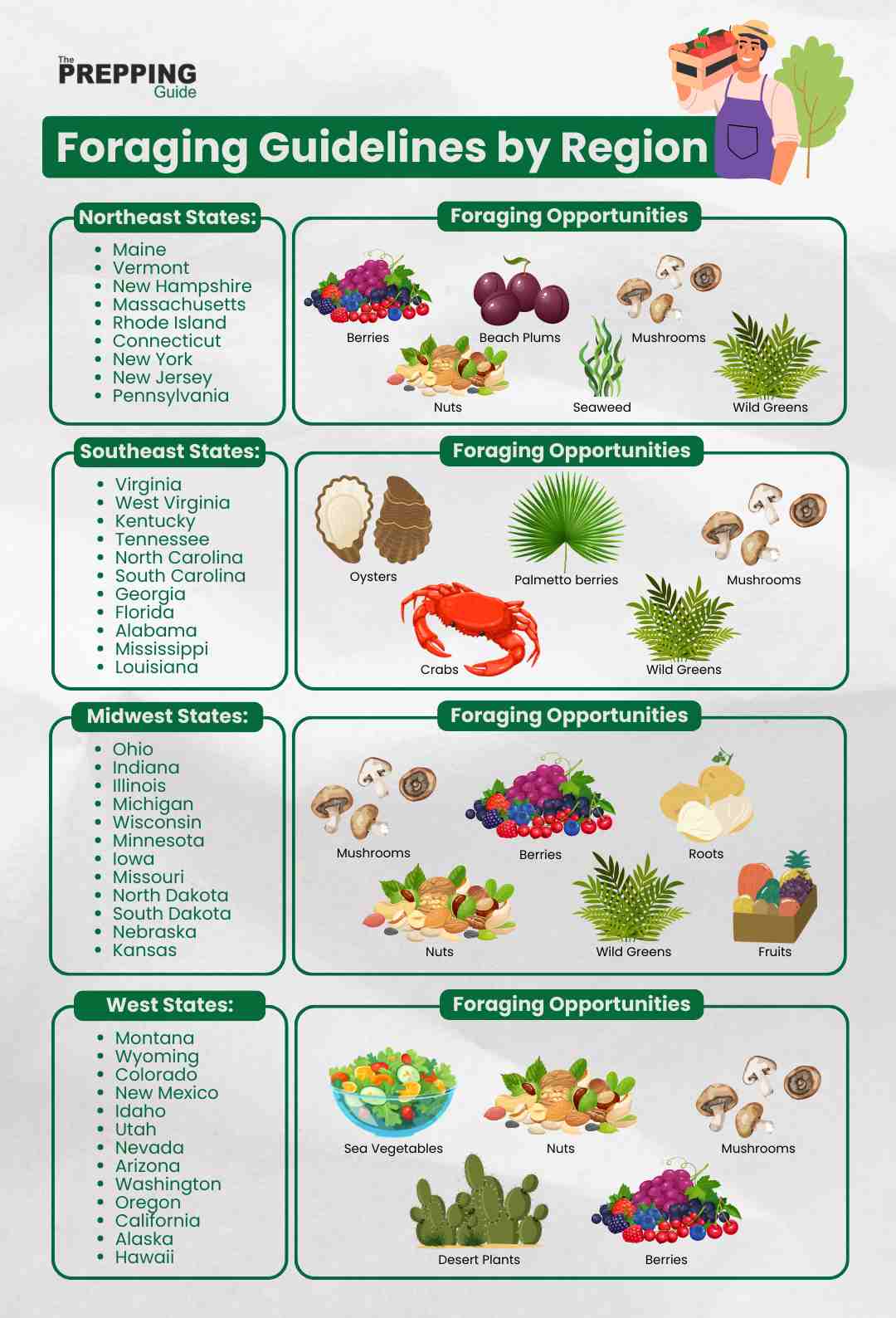

Bear in mind: That is only a glimpse into the varied world of regional foraging. It’s essential to conduct thorough analysis on particular species, their identification traits, and any potential lookalikes earlier than consuming any wild plant or mushroom. Moreover, at all times prioritize the well being of the ecosystem and by no means take greater than you want.
Is Foraging Harmful?
When approached with the correct information and respect, foraging generally is a protected and rewarding expertise. Nonetheless, it’s important to acknowledge that inherent dangers are concerned, and sure precautions should be taken to reduce potential risks.
Listed here are some key elements to contemplate:
1. Misidentification: Some of the important risks related to foraging is the danger of misidentification. Many edible crops and mushrooms have toxic look-alikes, and even a small mistake can result in critical sickness and even demise. It’s essential to by no means eat any wild plant or mushroom until you’ll be able to definitively establish it with 100% certainty.
Listed here are some examples of generally encountered toxic crops in North America:
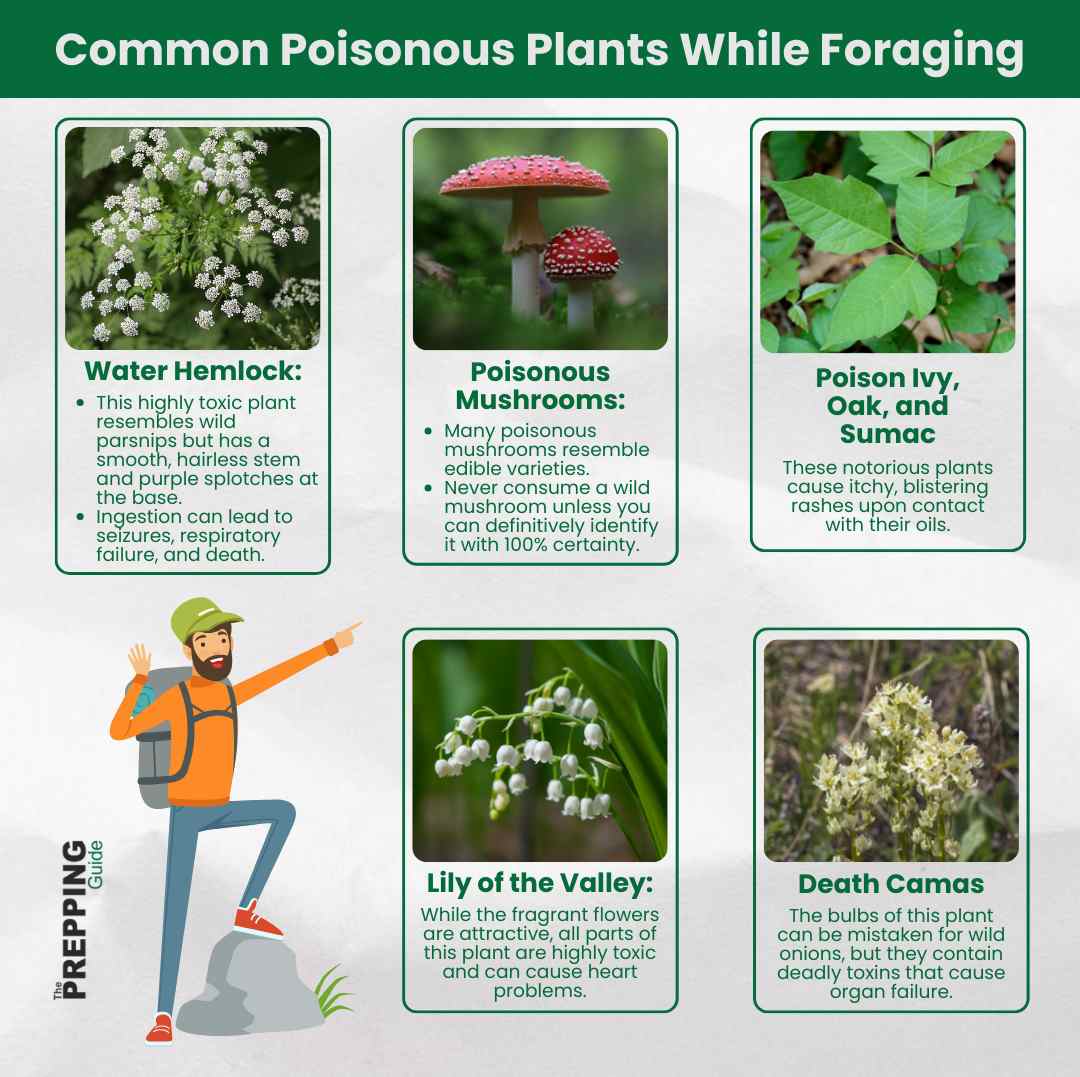

2. Contaminants: Even appropriately recognized crops and mushrooms will be harmful if contaminated with pesticides, herbicides, or different dangerous substances. Keep away from foraging close to closely trafficked areas, agricultural fields, or industrial websites, as these areas usually tend to have dangerous contaminants within the soil and crops.
3. Allergic reactions: People with allergic reactions to sure crops or pollen ought to train excessive warning when foraging. Even a small quantity of an unknown plant can set off a doubtlessly life-threatening allergic response.
4. Wildlife encounters: Relying on the situation, foraging would possibly contain venturing into areas inhabited by wild animals. Whereas most encounters are unlikely to be harmful, it’s essential to concentrate on your environment, train warning, and keep away from disturbing wildlife.
5. Overconsumption: Even edible crops and mushrooms will be dangerous if consumed in extreme portions. Understanding the correct dosage for every species is important, and by no means overindulge, particularly when making an attempt one thing new for the primary time.
What’s Accountable Foraging?
Whereas the attract of foraging lies in its potential bounty, it’s essential to keep in mind that accountable practices are paramount to make sure a sustainable and moral expertise.
Accountable foraging goes past merely realizing which crops and mushrooms are edible. It encompasses respect for the ecosystem, moral harvesting methods, and making certain the longevity of the sources you search.
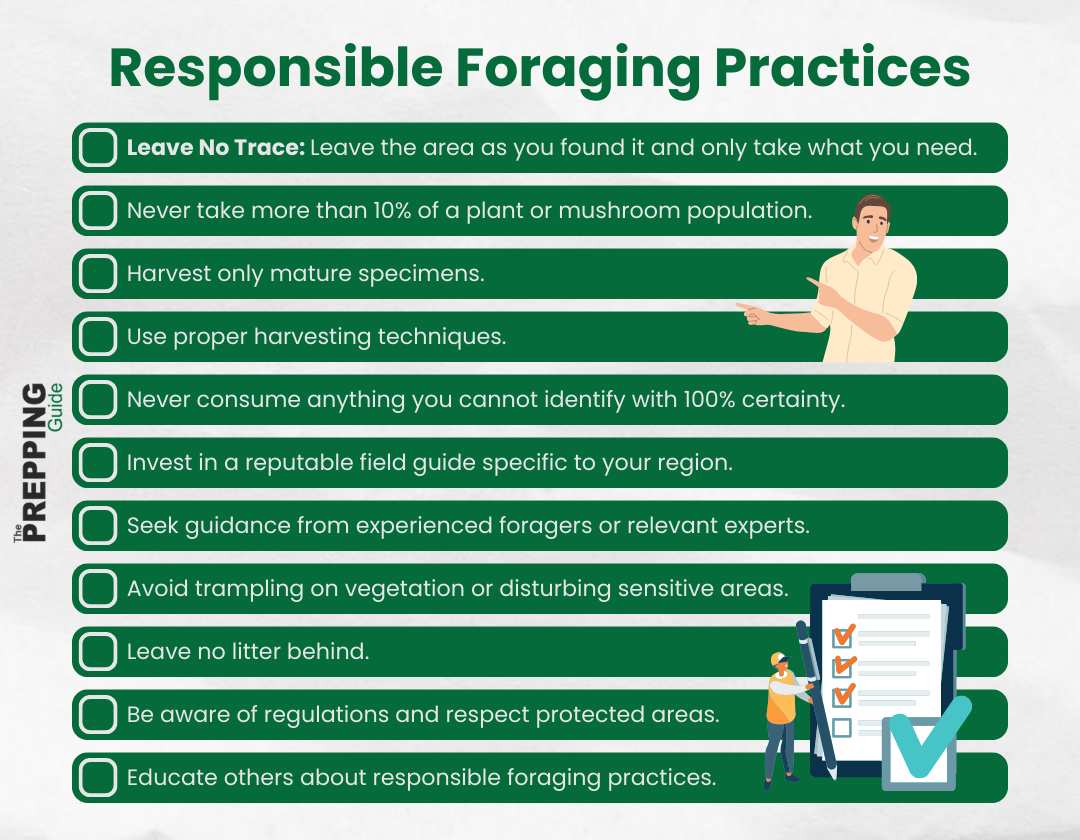

Sustainable Harvesting: Accountable foraging begins with sustainable harvesting practices. The aim is to take what you want with out jeopardizing the long run viability of the plant or mushroom inhabitants.
The leave-no-trace framework emphasizes minimizing your affect on the surroundings. Apply these rules by leaving the realm as you discovered it, avoiding disturbing wildlife, and solely taking what you want.
Consequently, by no means take greater than 10% of a plant or mushroom inhabitants. This ensures sufficient sources are left for the ecosystem to thrive and permits future generations to take pleasure in the identical expertise. Permit younger crops and mushrooms to succeed in maturity and reproduce, making certain the inhabitants’s long-term well being.
When harvesting, keep away from damaging the foundation system of crops by fastidiously reducing or digging them up with minimal disruption.
Species Identification: Correct identification is the cornerstone of accountable foraging. Consuming an unknown plant or mushroom, even when it seems innocent, can have extreme penalties.
To make sure security, by no means eat something you can not establish with 100% certainty. Even a small mistake will be life-threatening. Put money into a good area information particular to your area. These guides present detailed data on figuring out edible and toxic species. Search steerage from skilled foragers or related specialists. Studying from people with in depth information can considerably mitigate the danger of misidentification.
Respecting the Setting: Past harvesting practices and identification, accountable foraging necessitates respecting the surroundings you’re exploring.
Be conscious of your environment. Keep away from trampling on vegetation or disturbing delicate areas. Pack out all of your trash and any potential particles, leaving the realm pristine. Concentrate on laws and respect protected areas. Some areas might have restrictions on foraging, so analysis and cling to native laws.
By embracing these rules, you’ll be able to be certain that your foraging actions will not be solely protected and pleasing for your self but additionally contribute to the well-being of the surroundings and the fragile stability of the ecosystem.
Accountable foraging is about fostering a symbiotic relationship with nature, taking what you want whereas making certain its continued abundance for generations to come back.
Foraging Suggestions
Now that you simply’ve gained a complete understanding of the legalities, dangers, and tasks related to foraging, listed below are some sensible ideas that can assist you embark on a protected and profitable foraging journey.
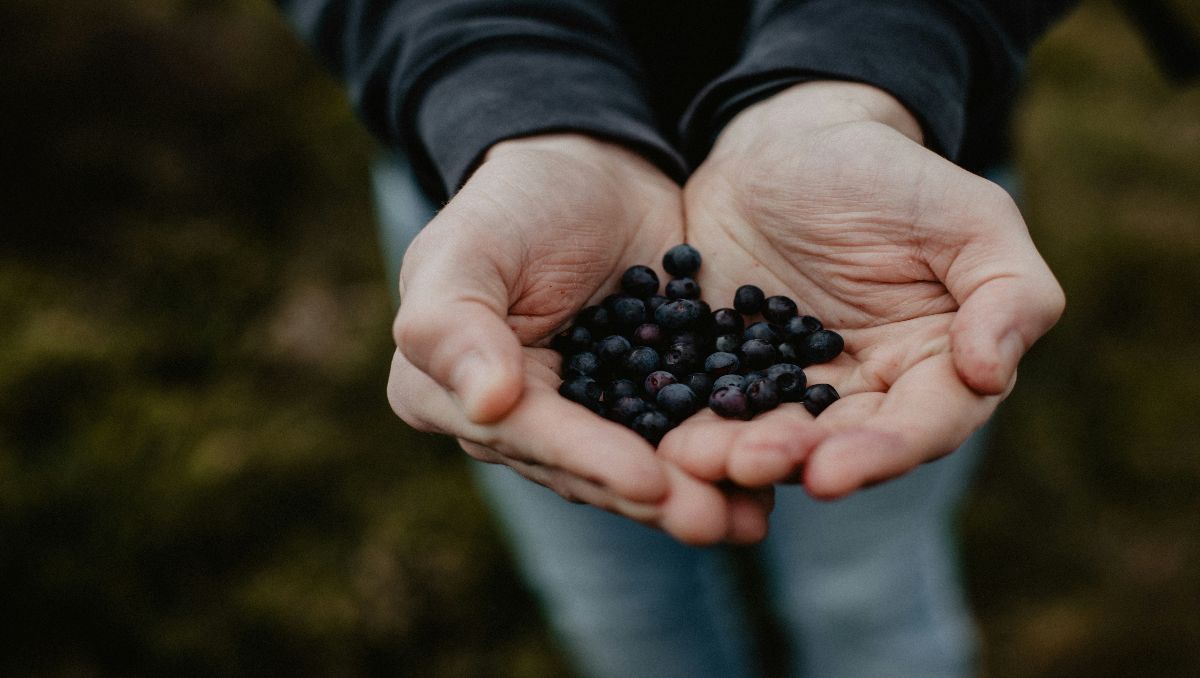

Preparation
Do your analysis: Earlier than venturing out, totally analysis your area’s edible crops and mushrooms. Familiarize your self with their identification traits, potential lookalikes, and harvesting tips. Make the most of respected area guides and on-line sources from trusted organizations, and search steerage from skilled foragers when potential.
Plan your journey: Select a location appropriate for foraging, contemplating accessibility, laws, and permitted species. Guarantee you have got the mandatory permits or landowner permission if venturing onto personal property.
Collect the fitting instruments: Pack a sturdy basket for accumulating your finds, a pointy knife for harvesting, a area information for fast reference, and a digicam to seize detailed photos of the crops or mushrooms you encounter.
Whereas Foraging
Begin sluggish and deal with a couple of species: As a newbie, step by step constructing your confidence and identification expertise is essential. Don’t overwhelm your self by making an attempt to establish and harvest quite a few unknown crops or mushrooms without delay.
Observe fastidiously: Pay shut consideration to the bodily traits of the plant or mushroom. This embody the dimensions, form, shade, texture, and any distinguishing options. Seek the advice of your area information or dependable on-line sources to verify your identification.
When unsure, throw it out. In case you are not sure concerning the id of a plant or mushroom, even after consulting your sources, err on the aspect of warning and discard it. It’s by no means price risking your well being to eat one thing you can not definitively establish.
Respect the ecosystem: Observe sustainable harvesting methods, as talked about earlier. Take solely what you want, keep away from damaging the encompassing surroundings, and go away no hint of your presence.
After Foraging
Double-check your identification. Earlier than consuming your foraged treasures, carry out a closing identification examine at dwelling utilizing dependable sources or seek the advice of with an skilled forager.
Correctly clear and put together your finds. Relying on the species, cleansing, and preparation strategies will range. Analysis correct cleansing and preparation methods for every edible plant or mushroom you harvest.
Begin small and luxuriate in! When consuming your foraged bounty, start with small portions, particularly in case you are making an attempt a brand new species for the primary time. This lets you monitor your physique’s response and keep away from potential opposed results.
By following the following pointers and prioritizing accountable practices, you’ll be able to remodel foraging into an enriching expertise that means that you can join with nature whereas having fun with its edible treasures. Information, warning, and respect for the surroundings are the cornerstones of protected and sustainable foraging.
A Closing Observe on Authorized and Accountable Foraging
When approached with the correct information, respect, and warning, foraging generally is a deeply rewarding expertise. It means that you can join with nature and luxuriate in its various bounty. It will also be a supply of contemporary, wholesome meals, a enjoyable outside exercise, and a strategy to be taught beneficial expertise about plant and mushroom identification.
Nonetheless, it’s essential to keep in mind that accountable foraging practices are paramount. By understanding the authorized panorama, figuring out edible species precisely, and adhering to sustainable harvesting methods, you’ll be able to guarantee your foraging actions are protected and moral and contribute to the ecosystem’s well being.
The Prepping Information empowers people with the information and expertise to navigate the world confidently and self-reliant. Whether or not you’re involved in studying extra about foraging, wilderness survival, or different preparedness subjects, The Prepping Information offers complete sources, knowledgeable recommendation, and sensible ideas that can assist you be ready for any scenario.
[ad_2]
Source link




